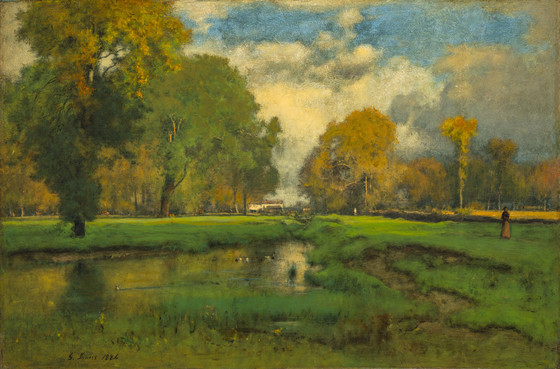After the Jacksonian presidency (1829–37), the adolescent country began an aggressive foreign policy of territorial expansion, exemplified by the success of the Mexican-American War (1846–48)....
After the Jacksonian presidency (1829–37), the adolescent country began an aggressive foreign policy of territorial expansion, exemplified by the success of the Mexican-American War (1846–48). Economic growth, spurred by new technologies such as the railroad and telegraph, assisted the early stages of empire building. As a comfortable and expanding middle class began to demonstrate its wealth and power, a fervent nationalist spirit was celebrated in the writings of Walt Whitman and Herman Melville. Artists such as Emanuel Leutze produced history paintings re-creating the glorious past of the relatively new country. Such idealizations ignored the mounting political and social differences that threatened to split the country apart. The Civil War slowed development, affecting every fiber of society, but surprisingly was not the theme of many paintings. The war’s devastation did not destroy the American belief in progress, and there was an undercurrent of excitement due to economic expansion and increased settlement of the West.
During the postwar period Americans also began enthusiastically turning their attention abroad. They flocked to Europe to visit London, Paris, Rome, Florence, and Berlin, the major cities on the Grand Tour. Art schools in the United States offered limited classes, so the royal academies in Germany, France, and England attracted thousands of young Americans. By the 1870s American painting no longer evinced a singleness of purpose. Although Winslow Homer became the quintessential Yankee painter, with his representations of country life during the reconstruction era, European aesthetics began to infiltrate taste.
More...



